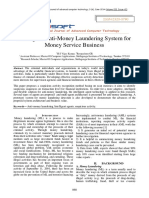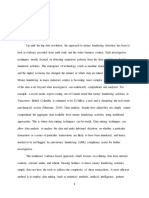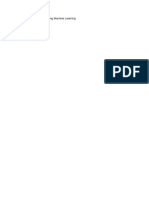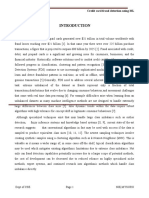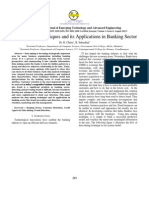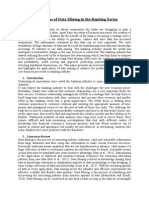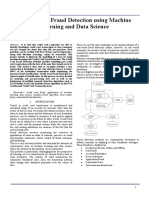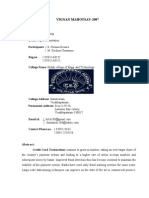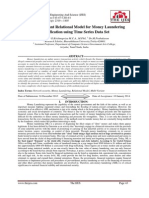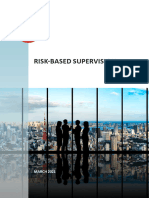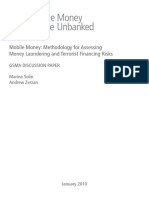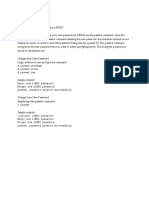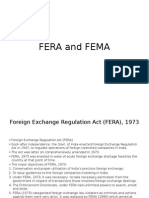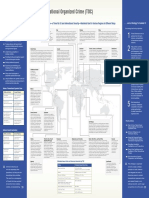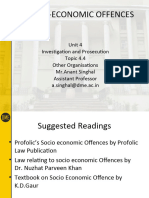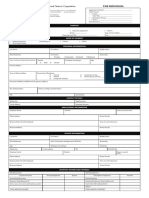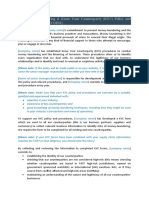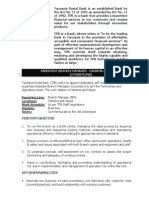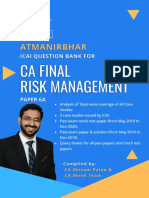0% found this document useful (0 votes)
20 views8 pagesClient Profiling Aml Sys
This document summarizes a research paper that proposes using data mining and machine learning techniques to help detect money laundering. Specifically, it focuses on using transaction data to profile bank clients and identify patterns in their behavior. The system architecture involves two groups of agents: those that capture suspicious transactions based on client profiles and rules, and those that further analyze suspicious transactions that are flagged. The document discusses related work applying data mining in financial applications, such as using clustering, classification rules, and support vector machines to model customer behavior and detect abnormal transactions.
Uploaded by
Nour Allah tabibCopyright
© © All Rights Reserved
We take content rights seriously. If you suspect this is your content, claim it here.
Available Formats
Download as PDF, TXT or read online on Scribd
0% found this document useful (0 votes)
20 views8 pagesClient Profiling Aml Sys
This document summarizes a research paper that proposes using data mining and machine learning techniques to help detect money laundering. Specifically, it focuses on using transaction data to profile bank clients and identify patterns in their behavior. The system architecture involves two groups of agents: those that capture suspicious transactions based on client profiles and rules, and those that further analyze suspicious transactions that are flagged. The document discusses related work applying data mining in financial applications, such as using clustering, classification rules, and support vector machines to model customer behavior and detect abnormal transactions.
Uploaded by
Nour Allah tabibCopyright
© © All Rights Reserved
We take content rights seriously. If you suspect this is your content, claim it here.
Available Formats
Download as PDF, TXT or read online on Scribd
/ 8








